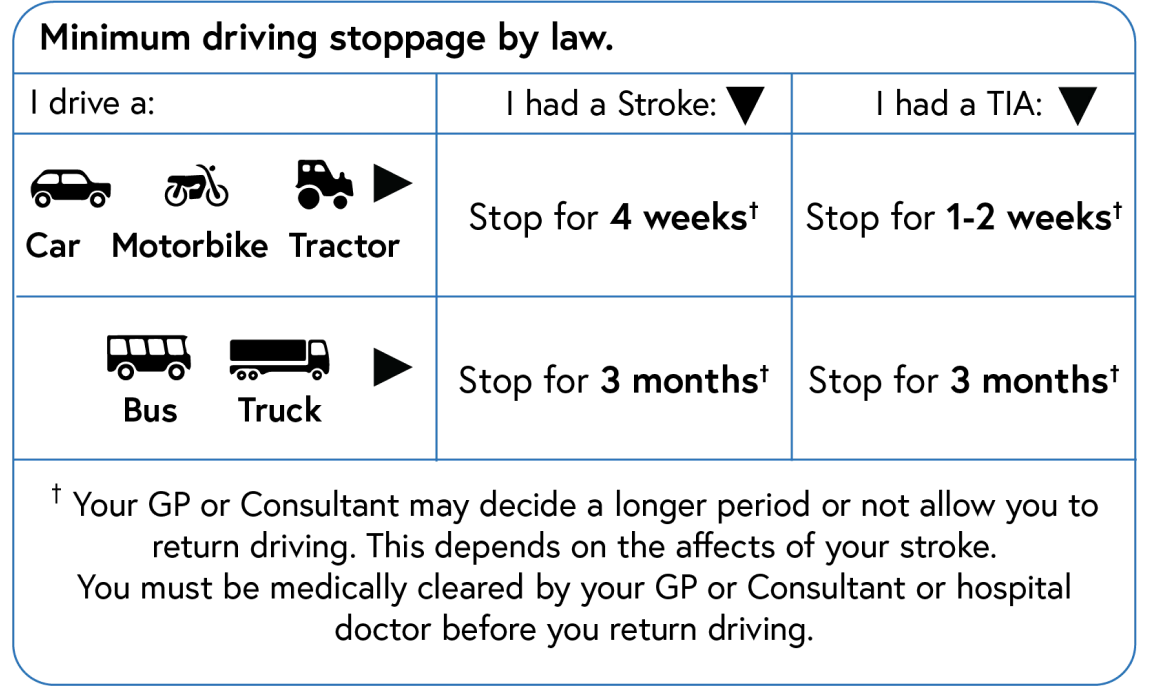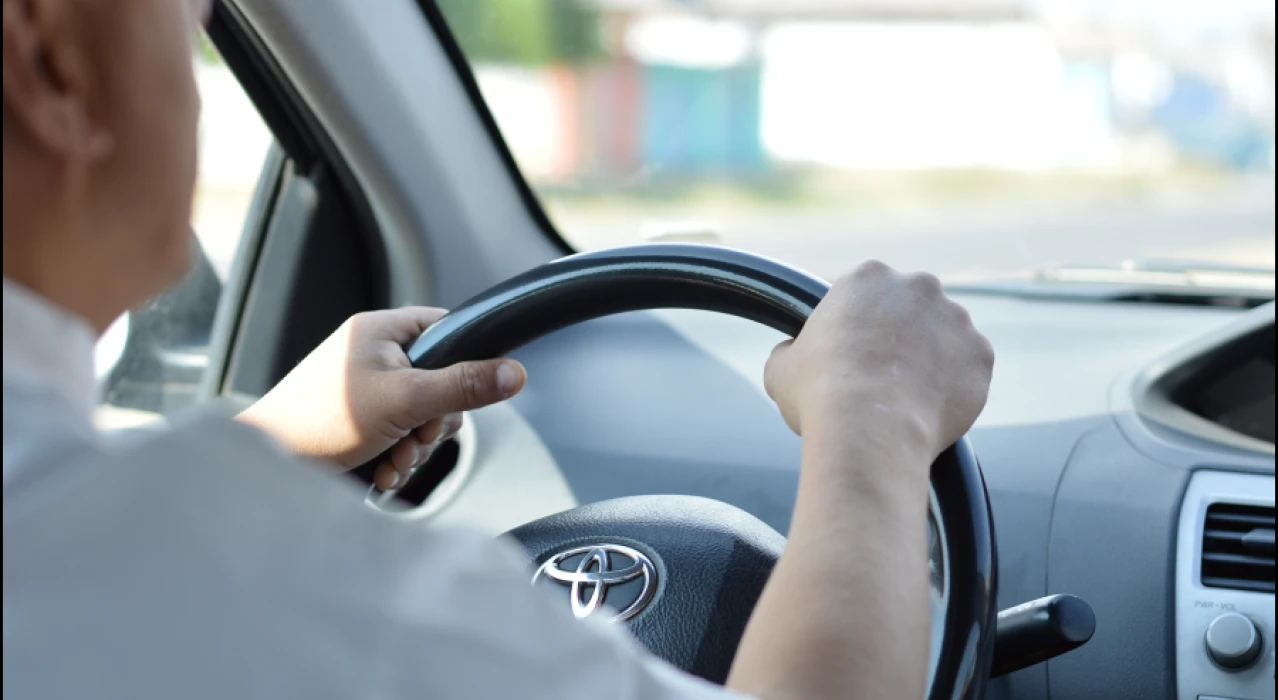Driving
- Libby Cunningham, Clinical Occupational Therapist
- 4 minute read
- Last updated: September 2023
Your GP (family doctor) or stroke consultant will tell you if or when you can return to driving. After a stroke or TIA (Transient Ischemic Attack) you are legally required to stop driving for a time. This is because your balance, coordination or vision can be affected and the risk of having another stroke is higher in the weeks following a stroke.

When can I return to driving?
The guidelines differ depending on the type of driving licence you hold.
For example:
- Group 1 licence for cars, motorcycles and tractors, or
- Group 2 licence for buses and trucks.
In general, the NDLS guidelines for Group 2 drivers are stricter than for Group 1.
Stroke affects everyone differently, and it can affect people’s ability to drive in different ways.
You should seek advice from your doctor about if and when you can return to driving. In some cases, you might not be allowed to drive again.
According to guidelines, in general:

After a TIA (Transient Ischemic Attack):
Group 1 drivers (cars, motorcycles or tractors)
Prohibited to drive for seven days
Group 2 drivers (buses or trucks)
Prohibited to drive for three months
After a stroke (where all symptoms have fully resolved):
Group 1 drivers (cars, motorcycles or tractors)
Prohibited to drive for four weeks
Group 2 drivers (buses or trucks)
Prohibited to drive for three months
After a stroke (with persisting stroke symptoms):
- You will need your GP or stroke doctor to complete a medical fitness-to-drive form.
- Your stroke occupational therapist may recommend that you complete an off-road driving assessment. They will discuss this with you if it is required.
- You may also be referred to have an on-road driving assessment to help your GP or stroke doctor in making this decision. Click the link below to access the form.
Irish Wheelchair Association | On-road driving assessment form
How might a stroke affect my ability to drive?

It may not be safe for you to drive after a stroke. You may continue to experience issues that can affect your ability to drive safely. Some examples of these problems are listed below.
- Vision problems
You may be required to undergo additional assessments performed by an ophthalmologist. - Memory, attention and/or concentration problems
- Power and sensation changes in limbs
- Fatigue and tiredness
- Seizures
If you develop seizures after your stroke, you must stop driving and get advice from your doctor about when you can return to driving.
The stroke team involved in your care can help assess your ability to return to driving. Your stroke consultant or GP should decide if and when you are fit to return to driving.
- You must inform the National Driver Licence Service (NDLS) about your stroke if your stroke affects your ability to drive. Your stroke team or GP can tell you if this is necessary.
- You also need to inform your motor insurance company about your medical condition. Otherwise, your insurance policy may become invalid and future claims may be affected.
- You may be asked to undergo an on-road driving assessment to help decide if you are suitable to return to driving. You can also arrange for a driving assessment yourself by contacting your local driving assessment centre (see below for contact details). These assessments can also identify and provide guidance on alternative options, such as switching to automatic transmission or getting professional adaptations.
Other information
Contacts
Top tips
Talk to your motor insurance company after a stroke
You also need to inform your motor insurance company about your medical condition. Otherwise, your insurance policy may become invalid and future claims may be affected.
Libby Cunningham | clinical occupational therapist |
Frequently asked questions
If you return to driving against medical advice, the NDLS and Gardaí can revoke your licence, and you may be charged and penalised.
Your car insurance will also be affected. If you are involved in a vehicle altercation (even if you are not at fault) and have not been cleared to return to driving post-stroke, this may invalidate any insurance policy you have.
If you have been advised by your doctor that you need to notify the NDLS about your medical condition, you should submit a completed medical report form to the NDLS. For more information, to to www.ndls.ie/medical-fitness.